Chops: Intermediate
Theory: Intermediate
Lesson Overview:
• Use non-standard chords to create funky guitar parts.
• Learn about how to create “stacked fourths” voicings.
• Unlock the secrets of the 7#9 and 7sus4 shapes.
Click here to download MP3s and a printable PDF of this lesson’s notation.
When we think of funk guitar, certain chord voicings come immediately to mind: A barred minor 7 (like Em7 on the 7th fret), a one-finger barred minor 7 (like Am7 on the 5th fret), a “James Brown” 9th chord, and a “Jimi Hendrix” 7#9 chord. These bread-and-butter workhorses of funk rhythm guitar sound great, but they can get boring fast if you’re limited to them. So let’s expand our horizons with other, less typical chord voicings that work great in funk and R&B—or in pretty much any musical context.
In this lesson, we’ll mainly confine ourselves to the oh-so-friendly key of E Dorian (E–F#–G–A–B–C#–D). To start, let’s get going with diatonic chord scales—in other words, we want to only use notes from the scale. In the first four examples, I play a low E and let it ring in order to ground ourselves with the key center and be able to hear the chords better in context. First, get comfortable with Fig. 1, which is just moving 2nd-inversion triads (5, root, 3) up the neck.
Fig. 3 and Fig. 4 are riffs based on this chord voicing. Fig. 5 picks up the tempo, adds some scratching funk rhythm guitar and alternates between Em7 tonality and A7 (the IV chord in E Dorian). You can also easily adapt this chord structure to the middle four strings, so be sure to explore and make up your own riffs. Hint: These voicings sound great and more pianistic played fingerstyle.
What about the 7#9 “Jimi” chord? Well, we can play this chord, or notes from it, all over the fretboard and we don’t need to confine ourselves to the typical position—especially if there’s a bass player hitting the root note. Fig. 6 shows the common position E7#9, followed by nine different variations. There are others too, and some of these can be played on other strings in other positions, while still retaining the same note structure.
Fig. 7 and Fig. 8 take a few of these E7#9 variants and employ them in some funk riffs. Note the extra scratched and muted strings, and listen for the slides into chords. The aim is to get comfortable with all of them, and get familiar with the particular flavor of each voicing (clustery or open or dense?) and be able to call them up when you think they’d work well.
Stacked-fourth chord voicings have a very open sound, since the lack of a 3 provides a “modern” sound with an ambiguous key center. Fig. 9 takes a stacked fourth voicing up the scale, again in E Dorian with the low E ringing to provide context.
An even more open sound can be had with a 7sus4 voicing. Again, we start by working through the voicings going up the scale, as shown in Fig. 10. Chord-scales are a great way to get familiar with different voicings and get your hands used to the chord shapes moving around within a key. Try chord scales both ascending and descending, in addition to moving in thirds, fourths, or any other pattern you can think of.
Fig. 11 employs the 7sus4 voicing in a jazzy R&B-style riff. We use a similar feel in Fig. 12, but use the stacked-fourth voicing concept. We combine both open-style voicings in Fig. 13.
We can also make our voicings denser by having the lower two notes be only a minor second or major second apart. Fig. 14 runs the chord scale up with this tight voicing. You can think of the voicing as a rootless 9 chord with the 9th degree of the scale (or 2nd degree, if you like) on the bottom. Or you could think of it as a 7th chord with the 7 on the bottom—or a mixture of both. So the chord-scale could become Em9–A7–Bm7–A9–Dmaj7–Em7–F#m7–Em9. Because there are only three notes in the voicing, it’s certainly open to interpretation—and wide open for music making. Fig. 15 uses three-note voicings in a riff that starts off with a typical Em7 barre chord voicing, so we get a nice mix of a stock funk chord with chimey cluster chords.
 Avi Bortnick
Avi Bortnick
Avi Bortnick plays rhythm guitar and electronics in the John Scofield Band, and is the creator of the Time Guru metronome iOS/Android app. He lives and gigs in the New York area, performing with Jim Weider’s Project Percolator, Rene Lopez, Jihae, Bunga Bunga Party and others. He can be reached at AviBortnick.net or on Facebook.






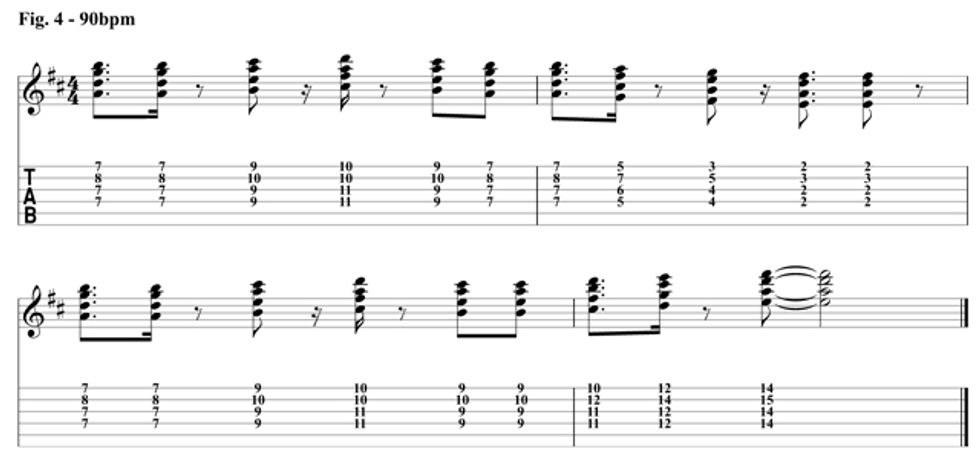
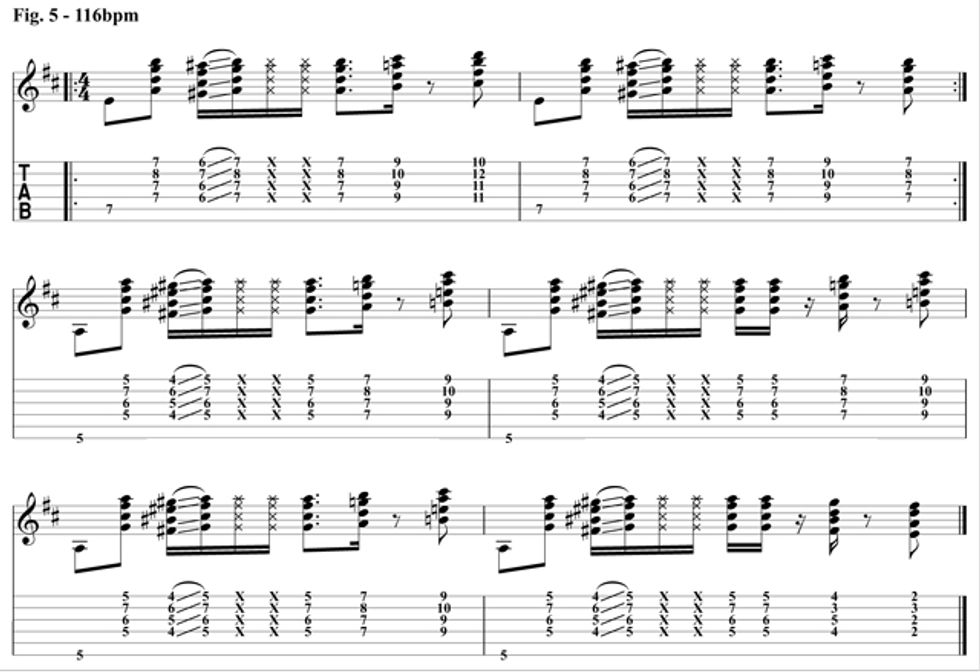
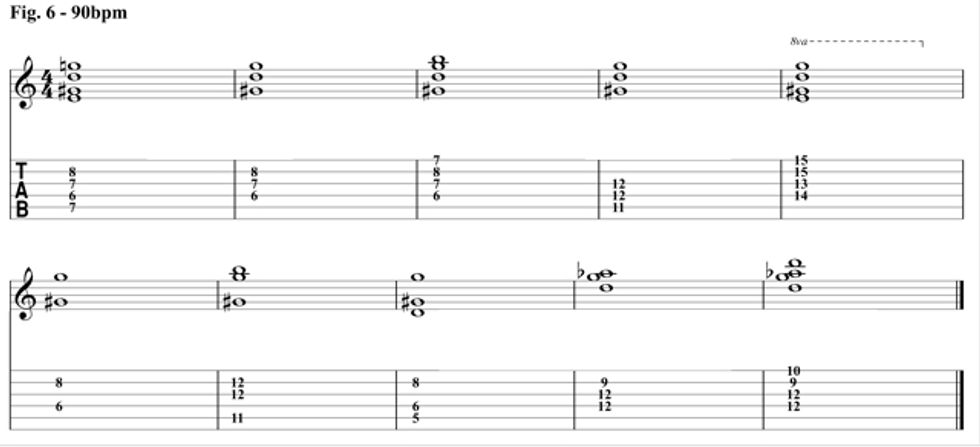




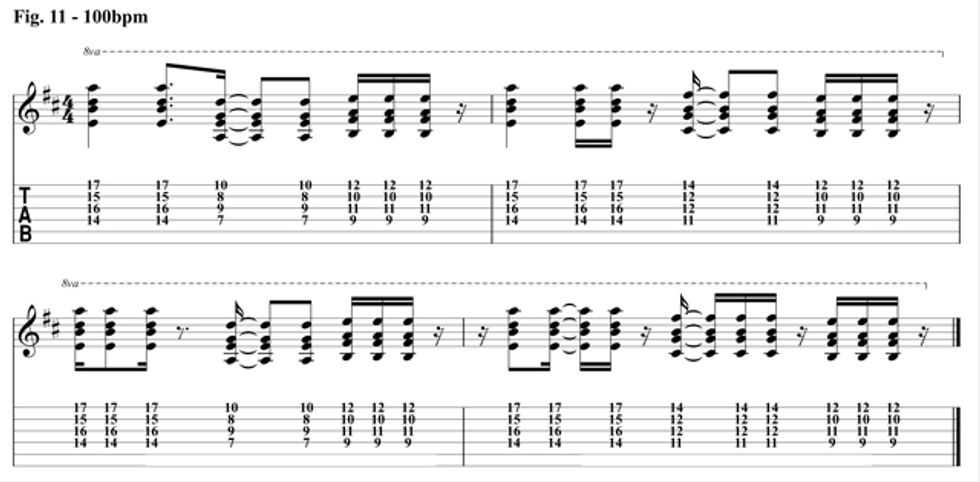

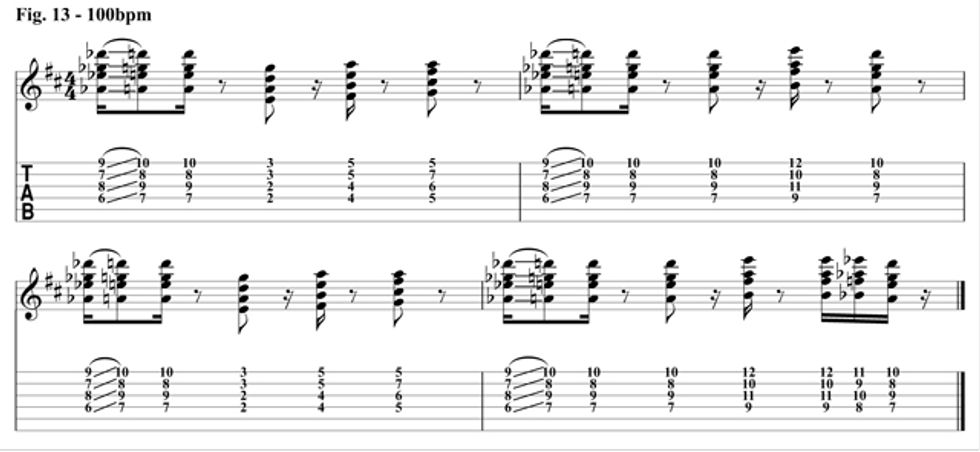





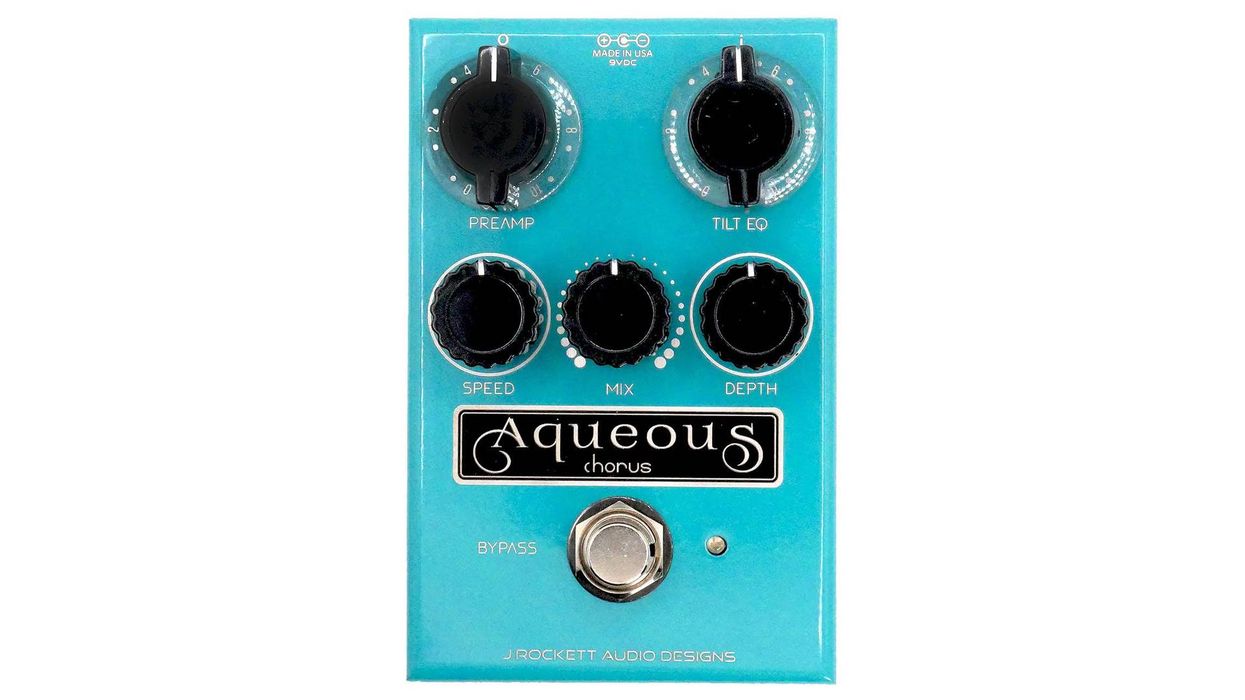






![Rig Rundown: Russian Circles’ Mike Sullivan [2025]](https://www.premierguitar.com/media-library/youtube.jpg?id=62303631&width=1245&height=700&quality=70&coordinates=0%2C0%2C0%2C0)












